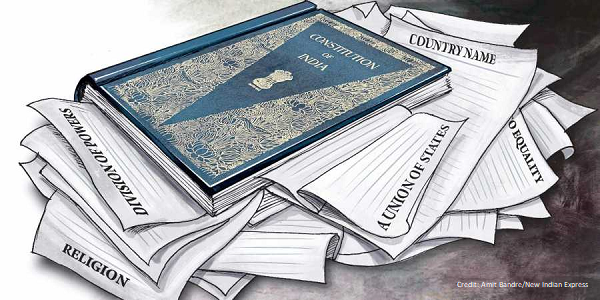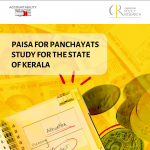
The Dangers of Decentralisation
8 June 2020
Sometimes, the struggle to argue against something that one has stood by for a long time, is a painful one. And so has it been for me, ever since a colleague asked me to prepare content for an online course on Decentralised Governance, that she intends to launch. One of the sessions is on the dangers of decentralisation.
There are many dangers to decentralisation. However, to elaborate on them would be a strategic blunder, where most higher level politicians and bureaucrats are waiting for excuses to pull things back to centralise to higher levels of government. Besides, the dangers to decentralisation usually manifest when the very design of decentralisation is bad.
What therefore, is bad decentralisation? The opposite of good decentralisation; as would be the obvious answer.
Classical – read simplistic – political and public finance theory would assert that decentralisation is good when there is a clear functional separation between the roles and responsibilities of multiple levels of government, when the fiscal package available with each level approximates their expenditure responsibilities, and when the accountability for the failure to perform their respective roles and responsibilities falls squarely upon that level of government, and nobody else.
However, in reality, these design imperatives of good decentralisation are rarely met. Functions often cannot be separated with precision, and there will always be a constantly changing grey area where functional responsibilities of various levels of government overlap. On the fiscal side, nearly always, the expenditures associated with the delivery of local services cannot be met through local revenue sources alone. That necessitates the structuring and operation of an inter-governmental fiscal transfer system. There has never been, and will never be, a perfect inter-governmental fiscal transfer system that can calibrate to the last detail the expenditure requirements of each level of government – indeed each such government – and ladle out precisely the required amount of finances for delivery of such services.
Any functional allocation of services and matching fiscal transfers is bound to throw up winners and losers. The losers will be sore and will demand that they are not bound to pay more taxes for being transferred to others, and the winners will continue to demand more funds, claiming that what they get is not enough to cover the cost of the services that they deliver.
The simplest way to solve the problem then is – you guessed it – centralisation.
This constant seesawing battle between centralisation and decentralisation does not merely exist in the realm of theory. It manifests itself practically every day, and lack of clarity on this issue often underlies most problems that arise in governance. That in turn, underscores that the problem is not really whether decentralisation is worse than centralisation or vice versa, but whether the design of the inter-governmental relationship is logical and aimed at serving the imperatives of good governance.
One of the topical examples of bad decentralisation design is how India deals with its Union Territories, particularly those with State legislatures. There is no doubt that the letter of the Constitutional design is conservative. A case in point is Delhi, which, with a population of about 30 million is larger in size than 14 other full-fledged States.
Within the compact, but thickly populated National Capital Territory, there are three levels of government; the Union, the Union Territory and the Local Governments (the Municipalities) that jostle for political visibility and legitimacy. The elected government of the National Capital Territory of Delhi is hamstrung in exercising the full powers with which counterpart elected legislatures of other States are endowed. Laws made by the State legislature of Delhi are subject to the assent of the President. The Lieutenant Governor of Delhi has the power to disagree with the Chief Minister and send his opinion to the President, and if the latter accepts the same, then the elected Delhi government can be overruled. Parliament can pass laws on the same matters as the State legislature of Delhi and if the provisions of State laws are repugnant to those of Parliament-enacted laws – then the former stand eclipsed by the latter.
When it comes to fiscal decentralisation, the position of the elected government of Delhi worsens. While it has to deal with State-sized problems because of its large population and population density, by not being a State, it is not eligible to receive a share from the divisible pool of the Union government like any other State; at best it can raise its own taxes and receive a share of the GST.
There has never been, and will never be, a perfect inter-governmental fiscal transfer system that can calibrate to the last detail the expenditure requirements of each level of government
To compound the problem further, government assets that serve the same purpose as far as citizens are concerned, such as schools and hospitals, are run by all three levels of governments, namely – the Municipalities, the State government and the Union Government. If these institutions run to different rules set by their separate parent governments, then monumental confusion can result. If citizens themselves do not care to notice which level of government does what, then the confusion becomes not only intractable, but even lethal.
Last week, we saw hospitals that come under the Union government adopt a different standard and rules when it came to treatment of COVID-19 positive patients, as compared to the State government. Such confusion was exploited by political interests to fling allegations of maladministration and callousness against different levels of governments. Worse, it inconvenienced citizens who were ill, a dreadful situation in a pandemic.
Clearly, Delhi is a bad advertisement for the laudable concept of decentralisation. The Constitutional provisions contained in Part XIII of the Constitution need to be thoroughly debated. The restrictive and conservative approach of this chapter seems to be an anachronism in this day and age, particularly when states with much smaller populations are considered as full States and Delhi is not.
T.R. Raghunandan is an Advisor at Accountability Initiative.
Also Read from the Author: Whither, Local Governments, in the Pandemic?





